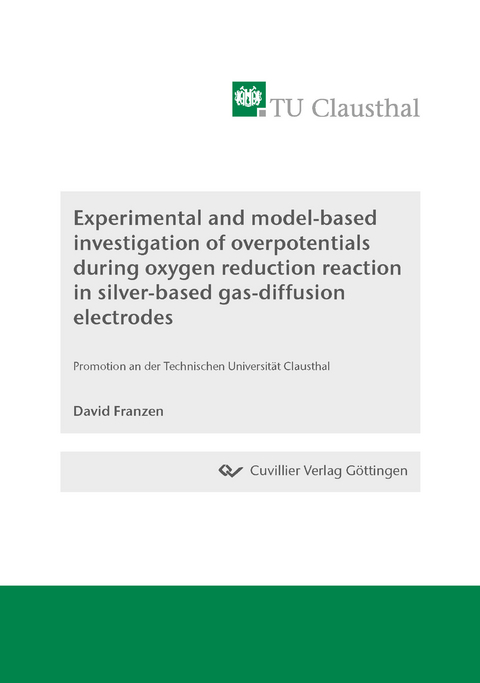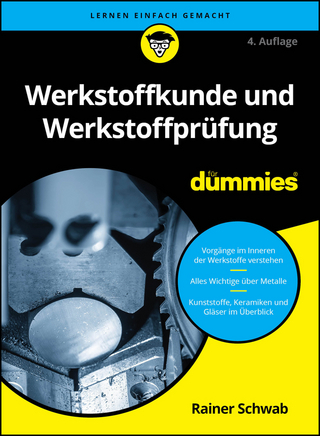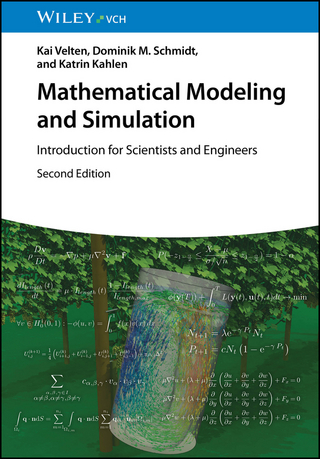Experimental and model-based investigation of overpotentials during oxygen reduction reaction in silver-based gas-diffusion electrodes
Seiten
2021
Cuvillier Verlag
978-3-7369-7514-9 (ISBN)
Cuvillier Verlag
978-3-7369-7514-9 (ISBN)
- Keine Verlagsinformationen verfügbar
- Artikel merken
Chlorine is one of the most important basic chemicals, which is used directly or indirectly in the production of around 60 % of all chemical products. The production is almost exclusively based on energy intensive electrolysis processes, with an average of 2.5 – 3.5 MWh of electrical energy required per ton of chlorine generated. This means that chlorine production alone accounts for around 3 % of the electrical energy used worldwide in industry. By using oxygen depolarized cathodes (ODC), it is possible to reduce the demand for electrical energy on an industrial scale by about 25 %. Instead of hydrogen evolution, oxygen reduction takes place. Due to the low solubility of oxygen, the electrode is designed as a gas-diffusion electrodes (GDE). These are porous silver-based electrodes with hydrophobic regions due to the use of polytetrafluoroethylene (PTFE). During operation, the liquid electrolyte penetrates the pore structure, but the PTFE prevents complete flooding of the electrode. Oxygen is supplied via a gas compartment and enters the internal structure of the electrode. A three-phase interface is formed, consisting of liquid electrolyte, gas and catalytically active solid, at which the electrochemical reaction takes place. Although the technology is already successfully used industrially, many processes, especially the electrolyte distribution, inside the GDE remain unknown.
In this dissertation, the influence of PTFE is first systematically investigated. Subsequently the process is described in a pseudo-2D model supported by operando experiments. Finally, the exact penetration depth of the electrolyte is analyzed using specially designed electrodes.
In this dissertation, the influence of PTFE is first systematically investigated. Subsequently the process is described in a pseudo-2D model supported by operando experiments. Finally, the exact penetration depth of the electrolyte is analyzed using specially designed electrodes.
| Erscheinungsdatum | 03.11.2021 |
|---|---|
| Verlagsort | Göttingen |
| Sprache | englisch |
| Maße | 148 x 210 mm |
| Themenwelt | Naturwissenschaften ► Chemie |
| Technik ► Maschinenbau | |
| Schlagworte | agglomerate radius • Agglomeratradius • Brennstoffzellenelektroden • capillary-flow porometry • chlor-alkali electrolysis • Chlor-Alkali-Elektrolyse • Chlorproduktion • Diffusion • Electrical energy • electrochemical operando measurement • electrochemical reduction of CO2 • Electrochemistry • electrodes performance • electrolyte bulk • electrolyte distribution • electrolyte intrusion depth • electrolyte properties • electrolyte saturation • Electrowetting • Elektrobenetzung • Elektrochemie • Elektrochemische Operando-Messung • elektrochemische Reduktion von CO2 • Elektrodenleistung • Elektrolyteigenschaften • Elektrolyt-Eindringtiefe • Elektrolytmasse • Elektrolytsättigung • Elektrolytverteilung • energieintensive Elektrolyseverfahren • energy intensive electrolysis processes • Experimental Studies • Experimentelle Untersuchungen • fuel cells electrodes • gas compartment • gas-diffusion electrode • Gasdiffusionselektrode • Gasraum • graded electrode • gradierte Elektrode • Hydrogen evolution • hydroxide ions • Hydroxidionen • intrusion depth • Intrusionstiefe • Kapillarflussporometrie • Modell • Modellierung • Modelling • Operando electrolyte distribution • Operando-Elektrolyt-Verteilung • operando measurements • Operando-Messungen • oxygen depolarized cathode • oxygen depolarized cathodes • Oxygen Reduction • oxygen reduction reaction • Polarisationskurve • Polarization curve • Pore network • Porennetzwerk • radiographs • reversal point • Sauerstoffreduktion • Sauerstoffverzehrkathode • Sauerstoffverzehrkathoden • Silber • Silver • Stromdichte • Synchrotron radiation • Synchrotronstrahlung • transport mechanics • Transportmechanismen • Umkehrpunkt • Wasserstoffentwicklung |
| ISBN-10 | 3-7369-7514-7 / 3736975147 |
| ISBN-13 | 978-3-7369-7514-9 / 9783736975149 |
| Zustand | Neuware |
| Haben Sie eine Frage zum Produkt? |
Mehr entdecken
aus dem Bereich
aus dem Bereich
Introduction for Scientists and Engineers
Buch | Softcover (2024)
Wiley-VCH (Verlag)
119,00 €




